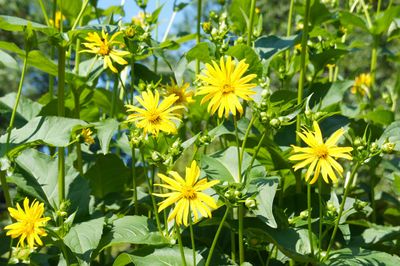The cup plant, for example, is a wildflower that can show just how advantageous planting native perennials can be.
What is a Cup Plant?
Cup plant, or Silphium perfoliatum, is a native flowering plant found in most parts of the eastern United States. Reaching heights of up to 8 feet (2.5 m.), this bright yellow perennial flower is a welcome addition to gardens for its attractiveness to bees and other beneficial insects. As a member of the aster family, cup plants provide profuse garden color from early summer throughout the fall.
How to Grow Cup Plants
When it comes to growing cup plants, information online is limited. Since some growers may consider the planting to be a weed, it may not be found in garden centers. However, the seed can be purchased online. Plants that have been grown from seed will not bloom until at least the second year of growth. During this time, it will be important that the planting remain consistently watered and weed-free. Cup plant growing conditions are not specific, as the flowers will grow in a wide range of locations. Since the plants are often found growing in meadows and along roadsides, most cup plants will do well when planted in less than ideal locations. Though tolerant of mistreatment, it is important that the flowers receive at least 6-8 hours of sunlight each day.
Cup Plant Care
Beyond planting, cup plant care is minimal. Their tolerance to heat and drought, as well as their ability to self-seed, make them an ideal candidate for planting in naturalized landscapes. To prevent re-seeding, growers should remove the flowers after bloom to prevent the development of seed.
